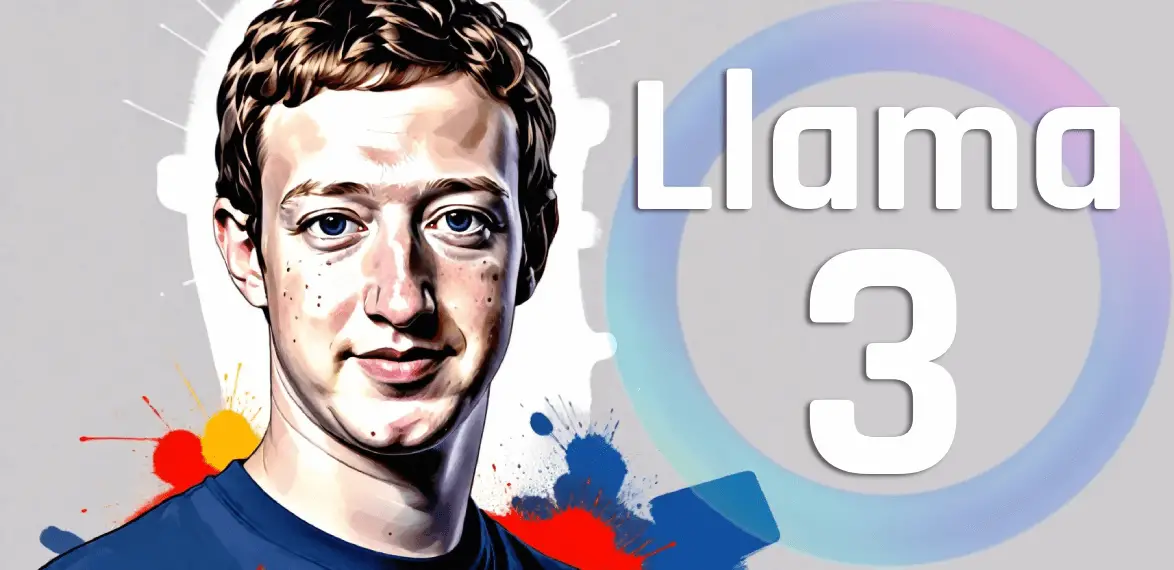
Meta ramps up its AI war against OpenAI and Google with the release of Llama 3
Meta Platforms put out early versions of its newest big language model, Llama 3, as well as an image creator that updates pictures as user type. The company is trying to catch up to OpenAI, which is the market leader in generative AI.
The models will be added to Meta AI, a virtual assistant that the company says is the smartest of its free-to-use competitors. The assistant will get more attention in Meta’s Facebook, Instagram, WhatsApp, and Messenger apps, and it will also get a new website that stands on its own. This will make it more competitive with OpenAI’s ChatGPT.
Meta has been working hard to get generative AI products to its billions of users in order to compete with OpenAI’s leading place in the field. This has required a complete overhaul of the company’s computing infrastructure and the merging of research and product teams that used to work separately.
In an interview, Chris Cox, Meta’s chief product officer, said that the social media giant gave Llama 3 new computer coding skills and fed it images along with text this time. For now, though, the model will only write text.
Later versions will have more advanced thinking, like the ability to make longer plans with more than one step, he said. “Multimodality” means that versions going out in the next few months will be able to make both text and images, Meta said in blog posts
.
Cox said, “The goal is to eventually take things off your plate and make your life easier, whether it’s dealing with businesses, writing something, or planning a trip.”
Cox said that using pictures to train Llama 3 would improve an update coming out this year for the Ray-Ban Meta smart glasses. This update is made possible by a partnership between Ray-Ban and EssilorLuxottica, a company that makes glasses. It will allow Meta AI to recognise items seen by the wearer and answer questions about them.
Meta also talked about a new relationship with Alphabet’s Google. This will allow the assistant to give answers that include real-time search results. This is on top of the relationship it already had with Bing from Microsoft.
With this update, the Meta AI assistant is now available in more than a dozen countries outside of the US. These countries include Australia, Canada, Singapore, Nigeria, and Pakistan. Cox said that Meta is “still working on the right way to do this in Europe,” where privacy laws are stricter and the new AI Act is about to make rules like sharing training data for models.
The fact that generative AI models need a lot of data has become a major source of tension in the growth of the technology.
Meta has been letting developers use models like Llama 3 for free as a way to catch up. If there is a popular and powerful free choice, it could make it harder for competitors to make money off of their own technology. Critics are also worried about safety because they don’t know what shady developers might build with this approach.
In a video that went along with the announcement, Mark Zuckerberg, CEO of Meta, made a reference to that competitor. He called Meta AI “the most intelligent AI assistant that you can freely use.”
Zuckerberg said that the biggest version of Llama 3 is being trained with 400bn parameters and is already getting 85 MMLU, which are metrics used to show how strong and well an AI model works. Two smaller versions are now being rolled out. One has 8 billion parameters and the other has 70 billion parameters. The latter got about 82 MMLU, or Massive Multitask Language Understanding, points, he said.
Developers have said that the previous Llama 2 version of the model didn’t understand basic context and mixed up questions about how to “kill” a computer programme with questions about how to murder someone. The Rival Google has also had problems like these. They recently stopped using their Gemini AI image generation tool because it was making mistakes when drawing historical people.
To get the model to understand subtleties, Meta said it used “high quality data” in Llama 3 to cut down on those issues. It didn’t say which datasets were used, but it did say that seven times as much data was fed into Llama 3 as was used in Llama 2 and that “synthetic” (AI-made) data was used to improve areas like reasoning and code.


